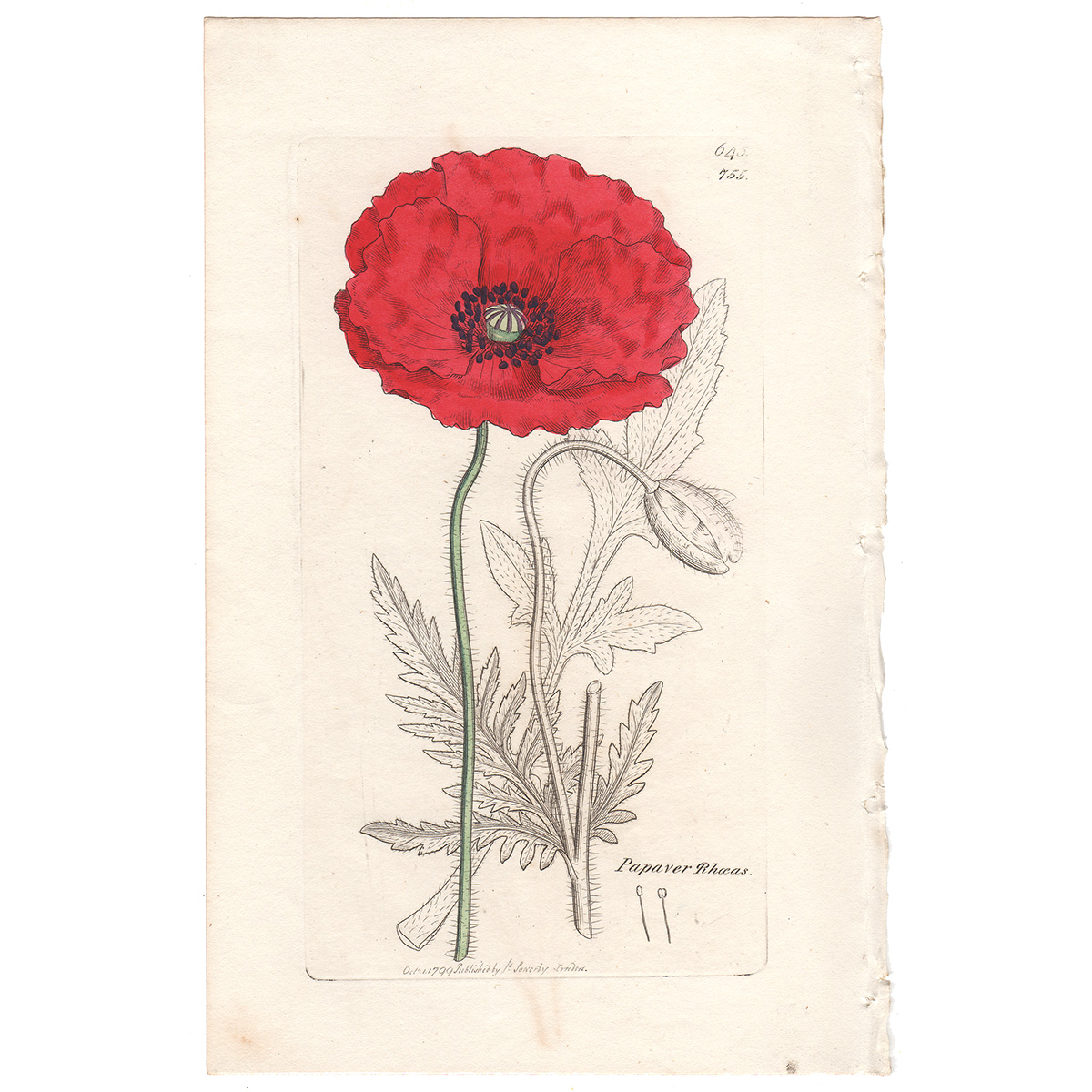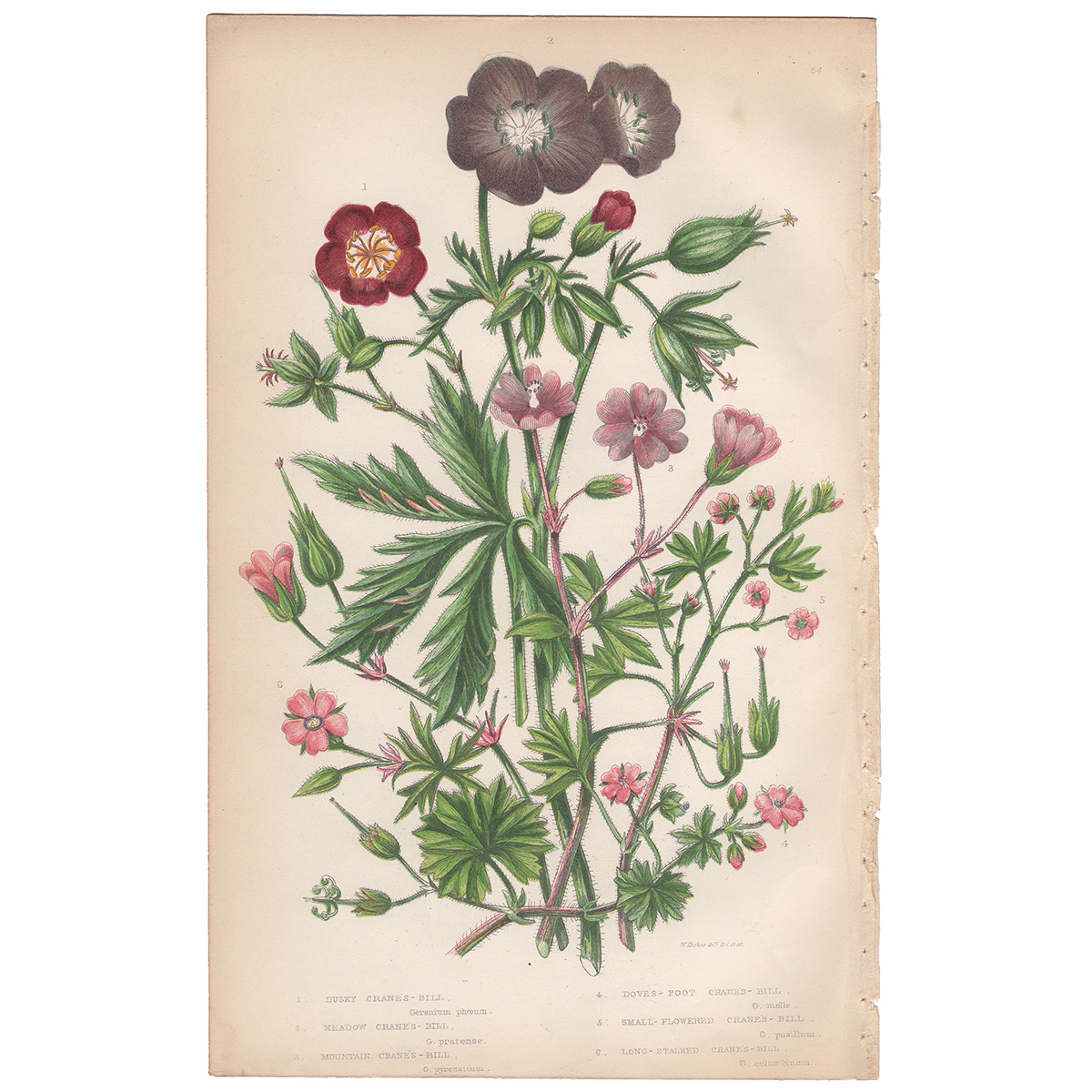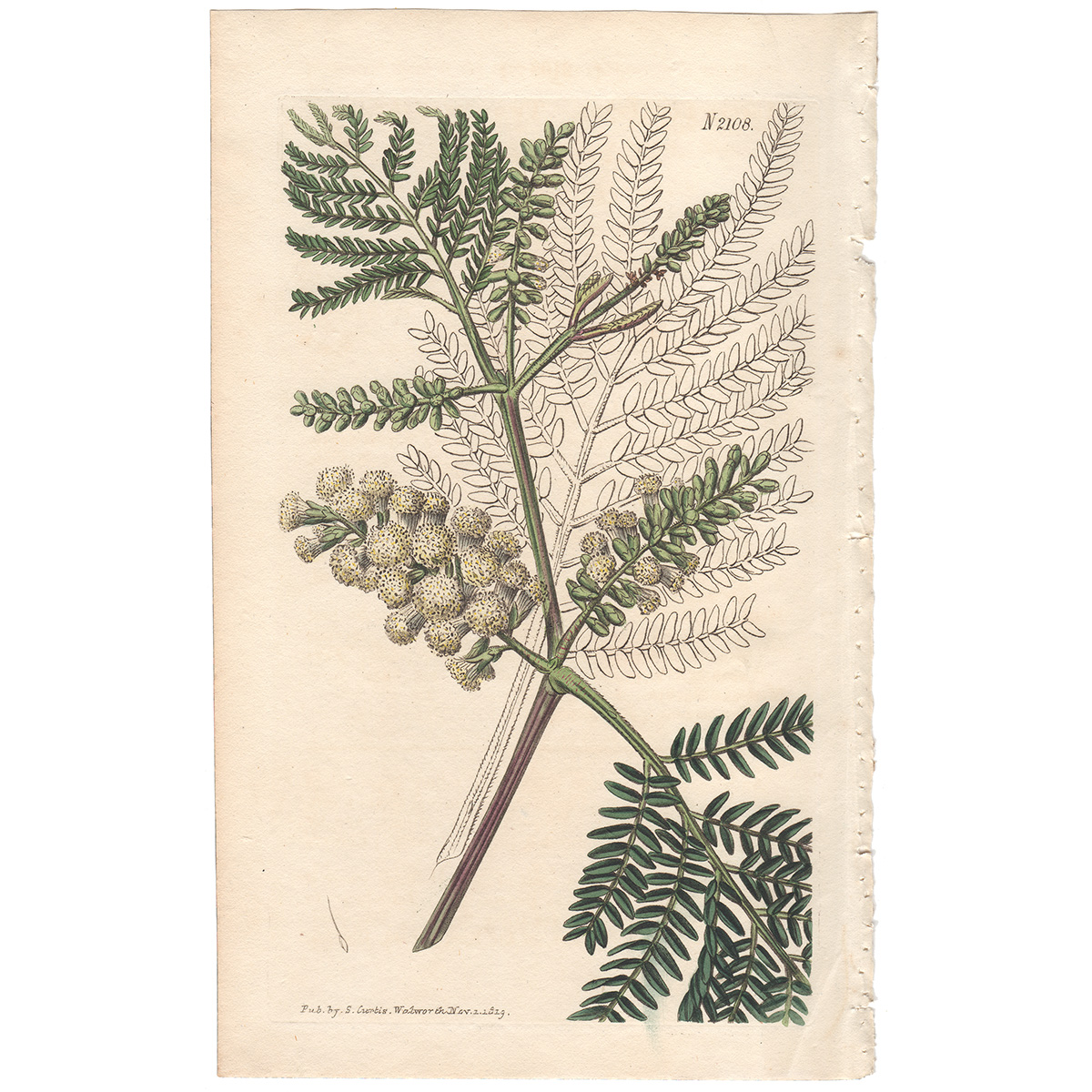Frequently Asked Questions
and Other Interesting Things You Didn’t Think to Ask
What is an engraving?
The concept of forming a picture by cutting lines in a hard metal surface is much older than the earliest dated engraving in 1446. Engraving is an intaglio printmaking process in which lines are cut into a metal plate in order to hold the ink. Plates are most commonly made of zinc, copper, or steel. Steel engravings contain very fine lines opposed to the softer lines of copper engravings where the finer details are sometimes lost, like in the center of the flower below.
Engraving, when at its height, was used by many painters in Germany and Italy to produce unique works of art. By the 18th century much less labor intensive processes of engraving were widely used by commercial publishers to create the grand natural history publications we know today.
Detail of steel engraving, Plate 2 Geneva from Coligni from Swiss Scenery from Drawings by James Cockburn.
What is a hand-colored print?
Before color printing was available, prints were colored by hand. Hand-coloring of engravings, etchings, and lithographs was most popular throughout the 18th and 19th centuries. The majority of the 19th century prints are colored with watercolor by artists in factory-like settings. Hand-colored prints often vary in tone and color as seen in the prints below.

Sowerby 1st Edition Plate 645 Common Red Poppy hand-colored engraving with darker red.
When was color printing invented?
Commercial color printing was first used in the form of chromolithography in the mid 19th century. Chromolithography was a labor intensive process with each color requiring a different stone plate, similar to color lithography. Most notable, John James Audubon’s Birds of America Bien Edition was published in 1860 using the chromolithography process. Before chromolithography, prints were colored by hand.
What is a binding edge when referring to a book plate?
Antique prints from books, called book plates, have a binding edge which may have small holes where the print was sewn into the book. The binding edge tends to be uneven and may include small creases. Later in the 19th century many book plates were glued into the book rather than sewn and therefor will have a straighter edge. A binding edge is desirable on an antique print and indicates the print has not been trimmed.
William Curtis Plate 2108 Two-spiked Acacia created in 1820 with original sewn binding edge on right side.
How to tell if an antique print is in good condition?
An antique print is in good condition if there are normal signs of aging. Normal signs of aging of antique prints include minor darkening especially around the edges. Some minor surface dirt in common. Minor foxing spots (rust colored dots) is also common in antique prints. The signs of aging should not overwhelm the image.
William Curtis Plate 2 Purple Rudbeckia created in 1787 from Curtis’ Botanical Magazine is in bad condition. Book plates in the very beginning and end of a book tend to be in worst condition than the more interior book plates. This image has tears repaired with pressure-sensitive tapes causing adhesive residue staining.
James Sowerby Plate 12 Corn-Cockle, created in 1834 from Conversations on Botany with an example of text transfer. Text transfer is staining to a book plate caused by text on the opposite page when a print is bound in a book.
What does the small text at the bottom of a print mean?
The small text usually at the bottom of the page refers to the printmaker, publisher, artist, and/or date created. The printmaker is not always the artist.
The text at the bottom of this hand-colored engraving from Curtis’ Botanical Magazine tells the details about the creation of this print. On the right “S. Edwards del” means this print was illustrated by Sydenham Edwards. The text in the center includes the details of the publisher W. Curtis. The text on the right, sculp, refers to the engraver, printmaker F. Sansom.
What is the best way to store antique prints or artwork on paper?
Artwork should be stored using archival materials to protect against harmful light exposure, water or moisture, bugs, acidic materials, and air pollution. Artwork should also be stored in a manner that makes it easy to take a peek at the artwork without causing handling damage such as creases or bumps to the corner.
Archival Methods offers many storage options including archival mat board and artwork storage boxes.
All antique prints sold by Summer Weeds are shipped using only archival materials. All prints are placed in a clear poly sleeve to protect against moisture and dirt. The poly sleeve includes an acid free archival 2-ply mat board to protect the print from handling damage.













